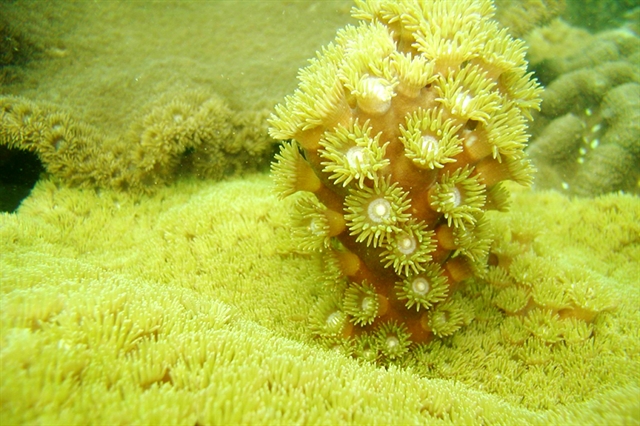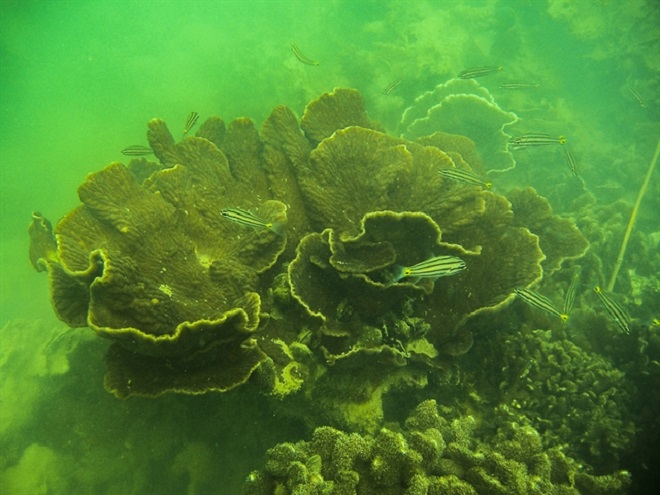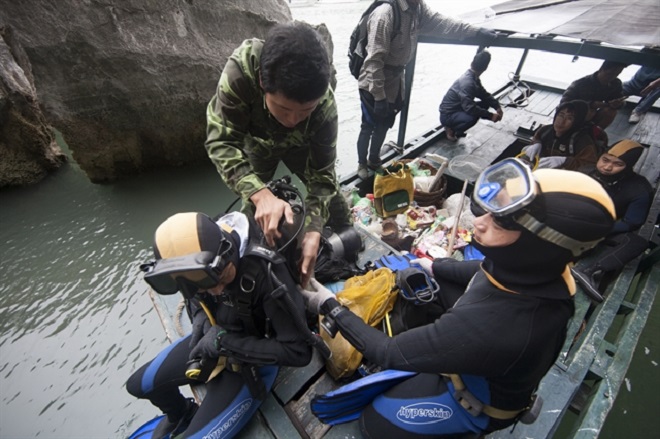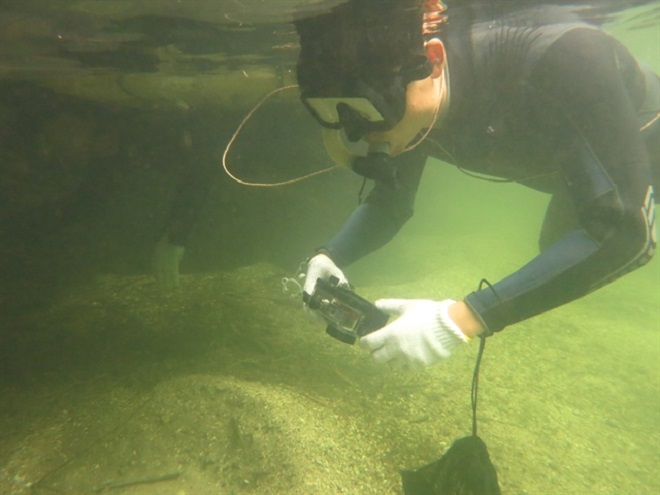Ha Long Bay is one of the brightest jewels in Viet Nam’s tourism crown.
Covering an area of more than 1,500 square kilometres and with around 2,000 islets, this popular travel destination in Quang Ninh Province was named a UNESCO World Heritage Site in 1994 and was recognised for its outstanding geological and geomorphological value by the World Heritage Committee in the year 2000.
But as the Bay prepares to welcome tourists from all over the world next year, it’s what lies beneath the water that needs monitoring and protecting.
Over the years, the large amount of boats carrying both tourists and fishermen has taken its toll on the coral reefs below the surface.
Climate change concerns have led to the authorities taking steps to preserve the reefs, which over the years have declined at a rapid rate.
Do Tien Thanh, deputy chief of Department of Business and Research, Ha Long Bay Management Board, said: “Ha Long Bay suffers from strong human impacts such as water transportation, tourism, fishing, mineral exploitation, wastewater, etc.
“The coral ecosystem is very sensitive to the quality of the water environment. Coral reefs on Ha Long Bay have undergone a long period of decline due to water pollution, fishing, raft farming, and tourism.”

A beautiful Turbinaria peltata coral. Photo Nguyen Dang Ngai
But it’s not only manmade problems that are a cause for concern. In 2006 a type of snail was discovered in the area that eats away at coral.
Thanh added: “In addition, climate change and the mutant development of Drupella snail, a species of coral eating snail discovered since 2006, also affects the degradation of coral reefs in Ha Long Bay.”

Coral reef are affected by water pollution, fishing, raft farming and tourism. Photo Nguyen Dang Ngai
Many measures have been put in place to protect the reefs, including banning fishing in Ha Long Bay two years ago.
“We regularly observe and monitor the conservation of coral reef ecosystems to promptly detect threats and deploy protection and restoration solutions,” said Pham Dinh Huynh, Deputy Head of Ha Long Bay Management Board.
“We zone the areas of coral reefs with high coverage, from 30 per cent or more, for strict protection. We also determine the location, coverage and species to build the database and map the coral area, thereby placing warning signs to prevent boats.
“Inspection activities in these areas have increased.”

Divers prepare to dive to observe the coral reef in Ha Long Bay. Photo Pham Le Minh
Banning fishing in 2019 was a key regulation to protect the area. Unlike the more modern tourist vessels, many fishing boats do not have environmental protection equipment that prevents water pollution.
Huynh added: “Oil leakage and turbidity are one of the main causes of coral death. The ban on fishing in the area also means preventing activities such as trawling, which will create a layer of sediment that kills coral reefs.
“We also organise activities to protect the water environment of Ha Long Bay such as informing and guiding boats not to anchor on coral reefs; preventing fishing activities in prohibited areas and strictly sanctioning acts of illegal fishing, especially when they using destructive tools. We organise teams to collect floating waste, especially garbage at the foot of the island or sandbank, where coral reefs are often distributed.”

Under water inspect work Photo Pham Le Minh
Most visitors to Ha Long Bay enjoy its spectacular sights without getting wet. In 2019, the number of tourists visiting reached 4.4 million, of which international visitors totalled nearly 2.9 million, up 6 per cent over the same period in 2018.
COVID-19 brought tourism to a grinding halt, but as Viet Nam and the rest of the world prepares for the new normal situation post-pandemic, plans are in place to welcome back tourists.
But there is a fine line that needs navigating to ensure visitors can enjoy the area without causing too much damage to the coral under the sea.
Pham Le Minh, Department of Business and Research, Ha Long Bay Management Board, regularly dives the reefs to monitor their progress, and clean up where necessary.
“The first time I dived, I was so surprised because I found a very beautiful coral reef with high coverage and vibrant colours,” said Minh
“During the monitoring process in the coral area, if we see garbage, floating nets, or anything that affects the coral, we will collect them. We also catch the snails that eat coral.
“From 2020, we started to organise dives to assess coral cover, with one or two trips a month. Sometimes we went a day for each reef, sometimes a few reefs a day, depending on the distance between the reefs.
“I want to participate in more in-depth monitoring and research training, to better meet the needs of my work. I hope our equipment such as underwater cameras will be upgraded. I also wish to have foreign research organisations and agencies support research and conservation of corals.
Paul Kennedy - Kiều Trinh